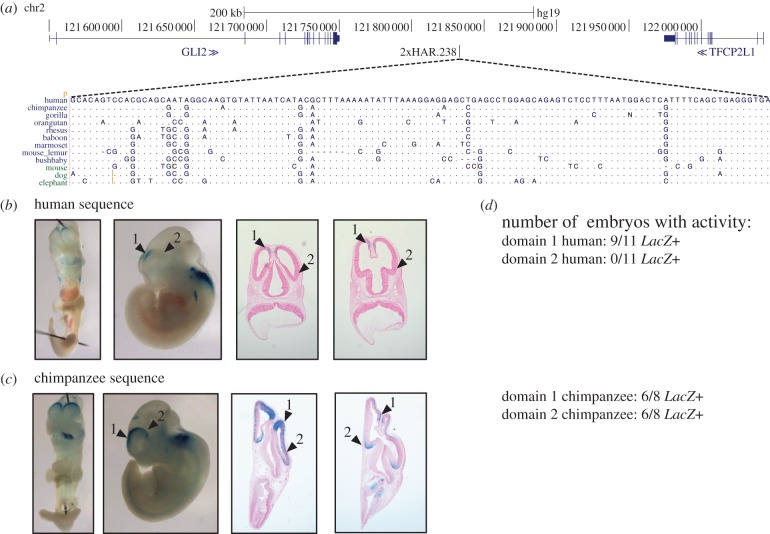Figure 4.
The 2xHAR.238 enhancer drives activity patterns in transgenic mice suggestive of brain expression differences between human and chimpanzee. (a) 2xHAR.238 is located on chromosome 2 and flanked by GLI2 and TFCP2L1. The alignment illustrates the human-specific substitutions in the ncHAR; bases matching the human sequence are shown as dots. A kilobase of sequence surrounding the ncHAR was cloned into a LacZ reporter construct. (b,c) One representative E11.5 transgenic mouse embryo is shown in two whole mount views plus two cross sections for the human sequence (b) and chimpanzee sequence (c). Both constructs produce consistent LacZ staining (blue) in the rostral dorsal pallium (arrowhead 1), the dorsal part of caudal hindbrain, and the rostral spinal cord. A second, more caudal, part of the dorsal pallium (arrowhead 2) shows activity unique to the chimpanzee sequence. The staining in the sectioned embryos shows human and chimpanzee enhancer activity in progenitor cells of the rostral dorsal pallium (domain 1), whereas only the chimpanzee enhancer has activity in the caudal dorsal pallium (progenitor cells and neurons; domain 2). The flanking gene, GLI2, is expressed in the cortex at E11.5 in mouse, and is thus a promising candidate target. (d) The activity patterns illustrated by the example images are consistent across embryos. All embryo images are given in electronic supplementary material, figure S1.

